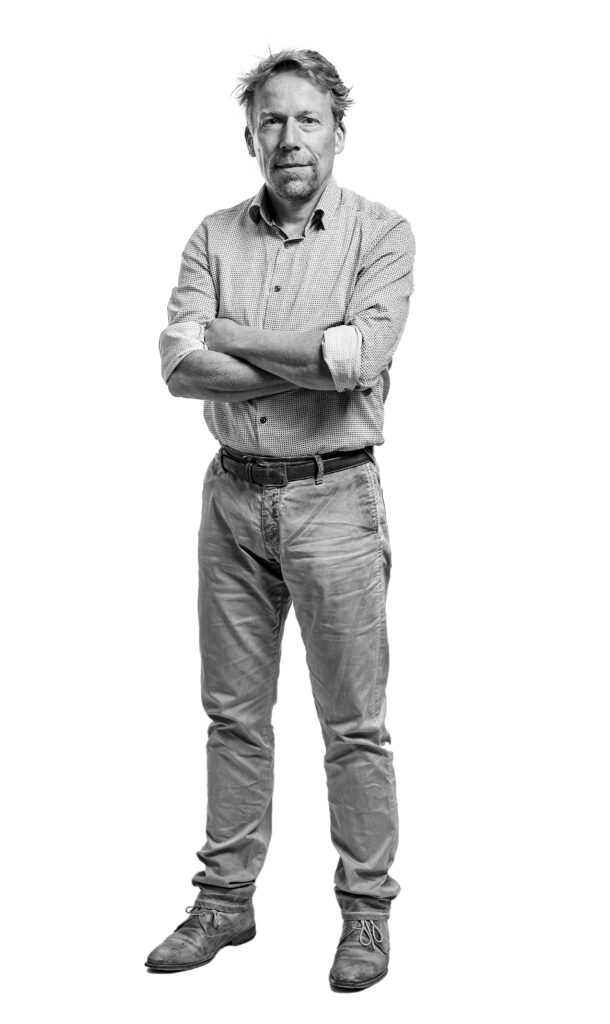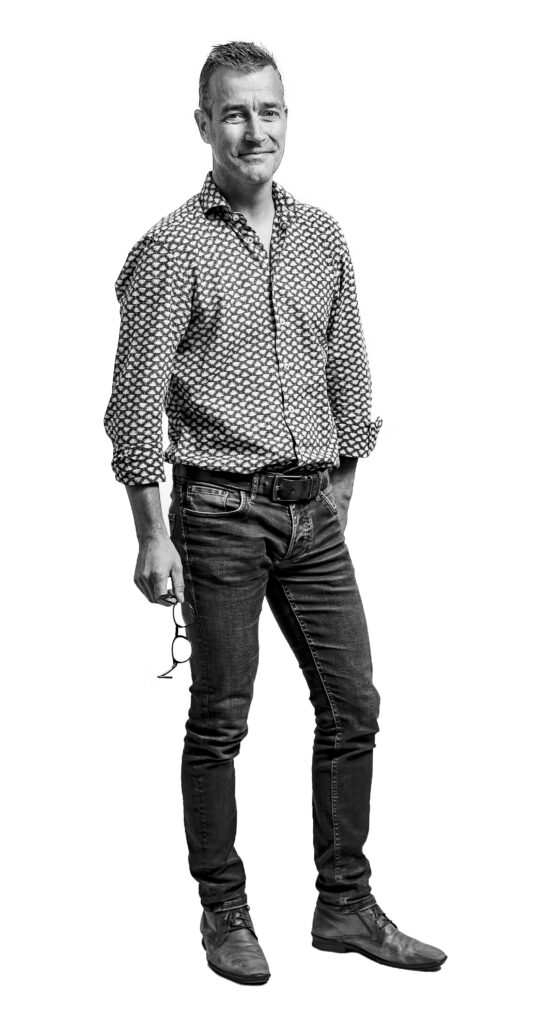Marieke Rotman
Climate goals are difficult to put into practice. Bio-energy sourced from wood looked like a win-win option, delivering more woodland and sustainable energy. But criticism is growing. Biomass clashes with the conservation of biodiversity, says ecologist Patrick Jansen, who specializes in forest ecosystems. Professor of European forests Gert-Jan Nabuurs, on the other hand, thinks the two can go hand in hand. A dialogue about dead trees, the flat bark beetle and multifunctional forests.

Patrick: ‘I’m worried about the effect of felling trees for biomass on biodiversity, especially in terms of the role of old and dead trees in the ecosystem. An army of specialized organisms help to break down wood over many years. That’s an almost invisible process, but it involves about 45 per cent of the biodiversity in forests. Now that cycle is being broken by felling old and dead wood. It’s a blind spot in forest management.’
Gert-Jan: ‘I couldn’t agree more about the importance of biodiversity. But there will soon be nine billion humans on this planet. Wood is in constant supply and is a sustainable means of production for everything from the chair you’re sitting on to cardboard boxes or toilet paper. Of course you’ve got to actively protect forests; I’m not here to defend the timber construction industry. But I do see opportunities: we can use some of the old wood in forests for bio-energy, and that’s been happening for years. In combination with wood waste streams, that can supply a tenth of our energy needs.’
Patrick: ‘The problem is that woodland as an ecosystem and woodland as a production system often go together, whereas for me as an ecologist, they are two very different things. A production forest is more like a piece of land on which trees happen to be grown, whereas a mature forest is a complex system. Wood is certainly a very sustainable building material. But it must not be used at the expense of areas that have been designated nature reserves, after much effort.
Gert-Jan: ‘Do you mean the Natura2000 areas? (Natura2000 is a European network of protected woodland, ed.)
Patrick: ‘I mean all the areas that count as nature reserves. If you establish a forest purely for production: fine. But if it is a nature area, its chief function must be clear: nature. I don’t believe in multifunctional forests in reality.’

Gert-Jan: ‘It’s true that Natura2000 doesn’t amount to much, even though it covers one third of all our forests. In Europe we only strictly protect less than one per cent of the forest, the ancient forests. We should give protected status to more forests with similar characteristics to those.’
Patrick: ‘Yes, forests with potential. You hear it said, ‘Once exploited, always exploited’, but if that’s the case we can write off the whole of the Amazon.
Gert Jan: ‘We’ve got more forest in Europe now than in the Middle Ages.’
Patrick: ‘But the ecological quality is bad, certainly in the Netherlands. If you want to go on milking a forest, you can’t designate it a nature reserve.’
Gert-Jan: ‘That term, milking the forest, doesn’t do justice to what goes on. A forest manager pays attention to every aspect of the forest and responds to the wishes of the general public. At the moment, those tend in the direction of more biodiversity.’
Patrick: ‘That’s easy to say. Imagine you are looking for a house and you find one without a roof or a bed. The seller says: ‘It’s a compromise, but it’s a house.’ It won’t be a good place to live, will it? That’s how it goes with forest management. If you can’t develop the forest in the direction of a fully-fledged ecosystem, you shouldn’t claim that as forest it contributes to the climate goals.’
Gert-Jan: ‘Timmermans (Frans Timmermans, Vice President of the European Commission, ed.) wants to start planting timber plantations in Europe now.’
Patrick: ‘I’ve seen those kinds of plantations: nothing lives there. Do something that benefits both the local population and nature.’
Gert-Jan (laughing): ‘So multifunctional forest after all.’
Patrick: ´Yes, after all. As long as protected forest really is protected. Natura2000’s protected list includes just two species that contribute to breaking down old wood: the European stag beetle and the flat bark beetle. It makes no sense, of course, to protect those two species and not the thousands of other species involved.’
Gert-Jan: ‘As well as primeval forest, in Europe we also have one to three billion hectares of forest that we harvest from, and we should make use of that for ecology.’
Patrick: ‘There are examples of forests that are exploited in moderation and yet remain very diverse and function well. But without bulk production, such as for biomass.’
Gert-Jan: ‘That way the shops will run out of toilet paper tomorrow, Patrick.’
Patrick: ‘Well, solve it! But hands off nature. The falling biodiversity is humanity’s problem.’
Gert-Jan: ‘In the end, we’ll have to try to reduce demand.’
Patrick: ‘Yes, that is the crux. People are happy that energy becomes even cheaper if we start producing it sustainably. Hello! Actually it should get more expensive. There are enough ways of keeping it affordable for people on low incomes. Otherwise it’s far too likely that biodiversity will pay the price.’

 Gert-Jan Nabuurs and Patrick Jansen. Photo: Eric Scholten
Gert-Jan Nabuurs and Patrick Jansen. Photo: Eric Scholten